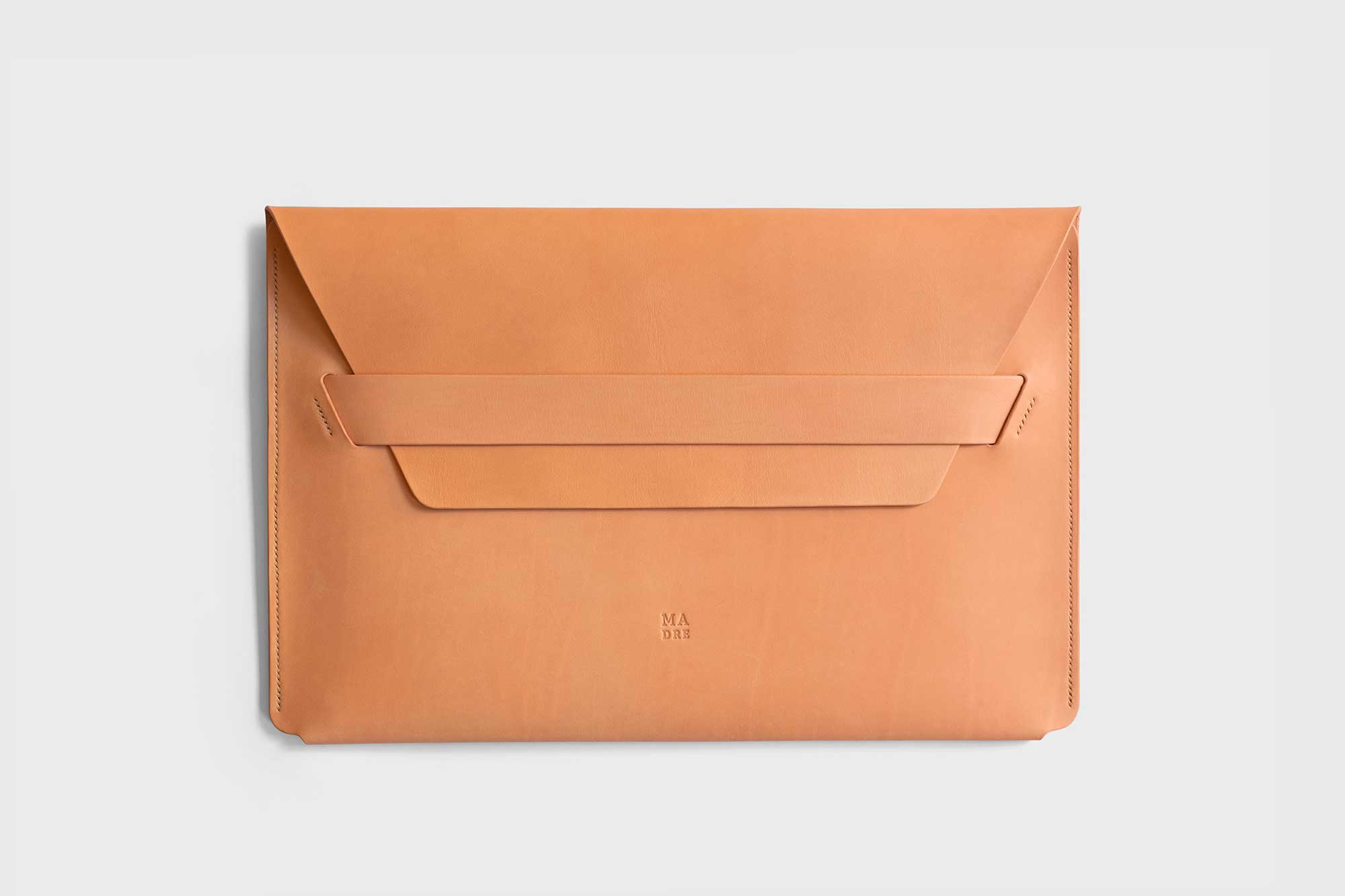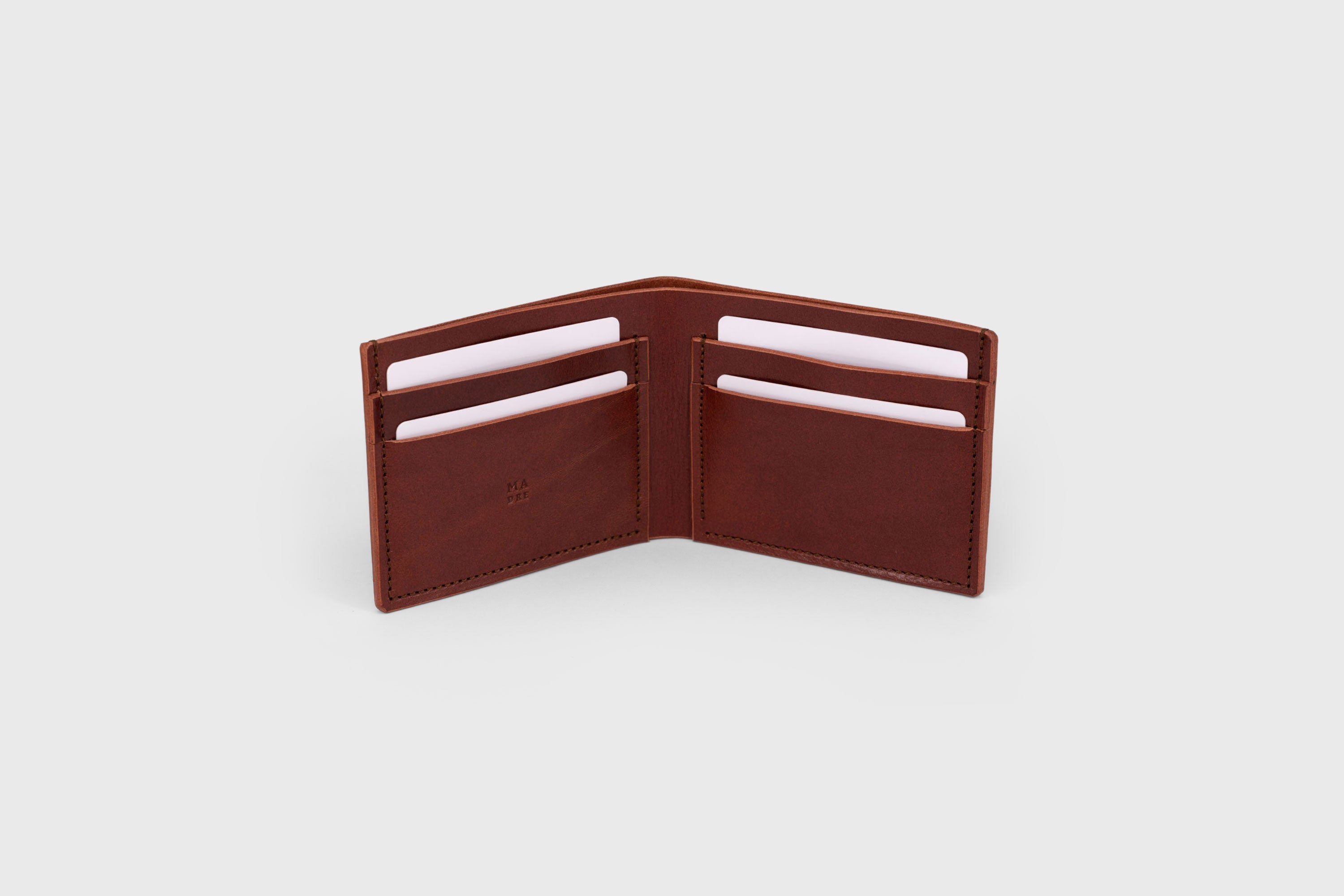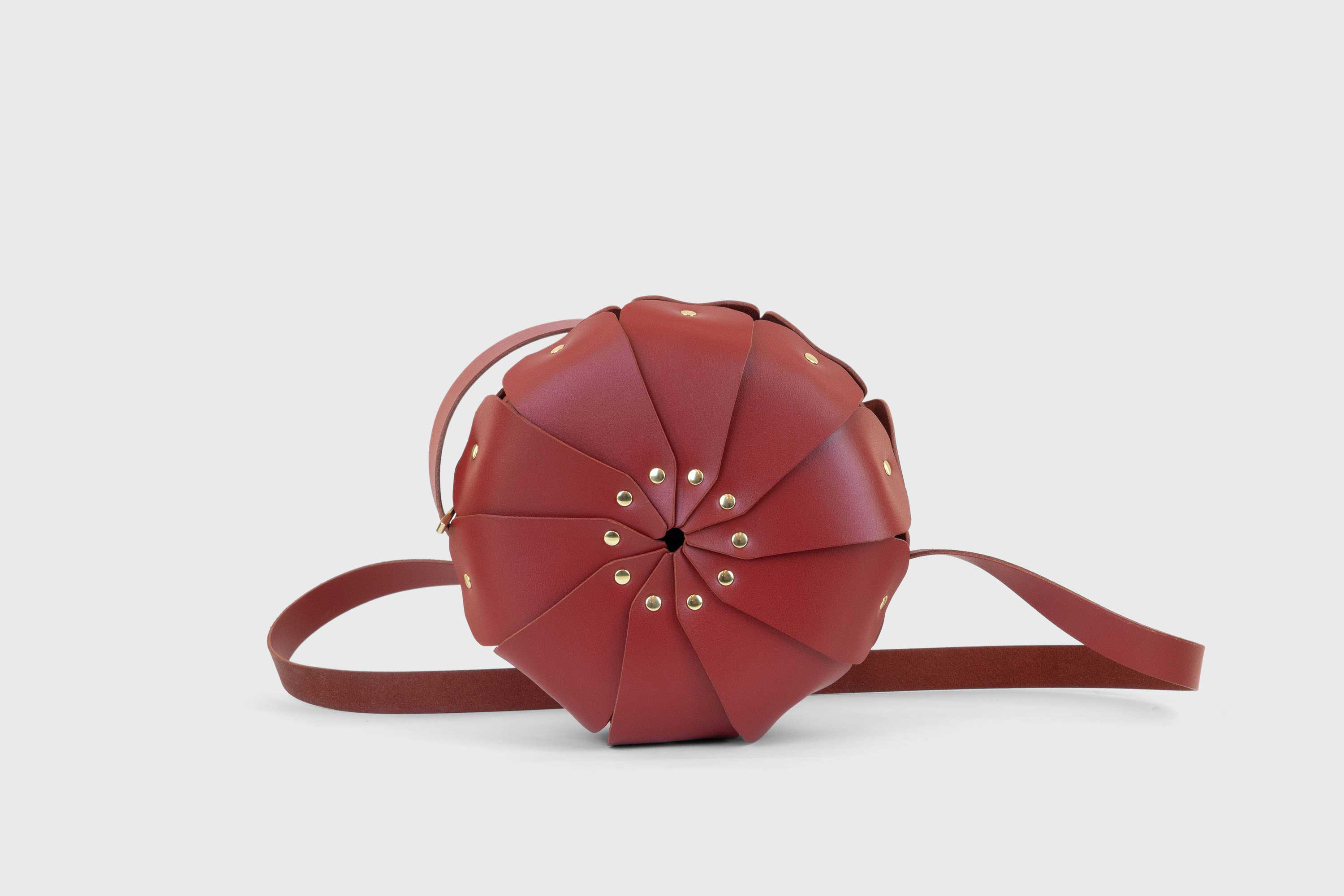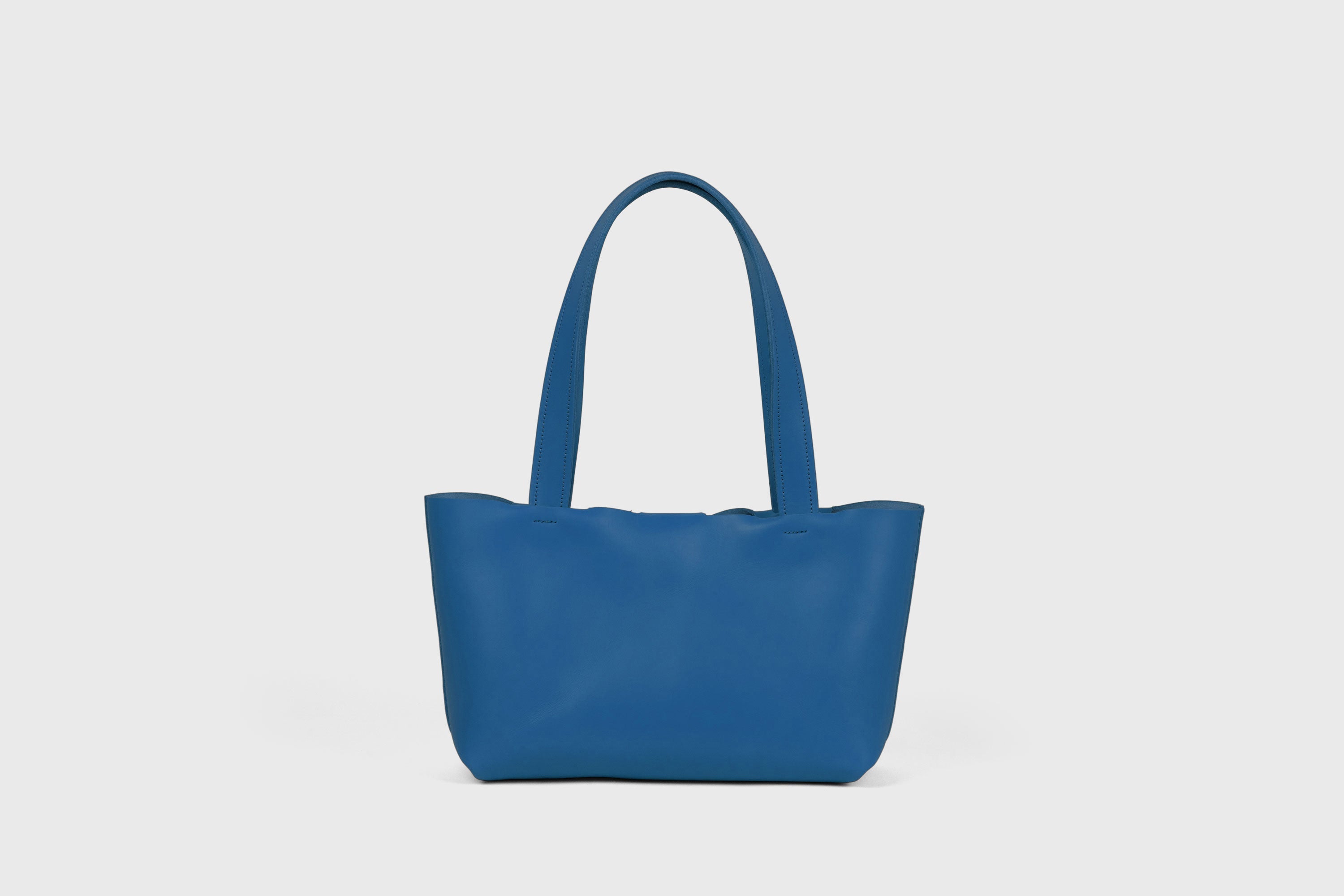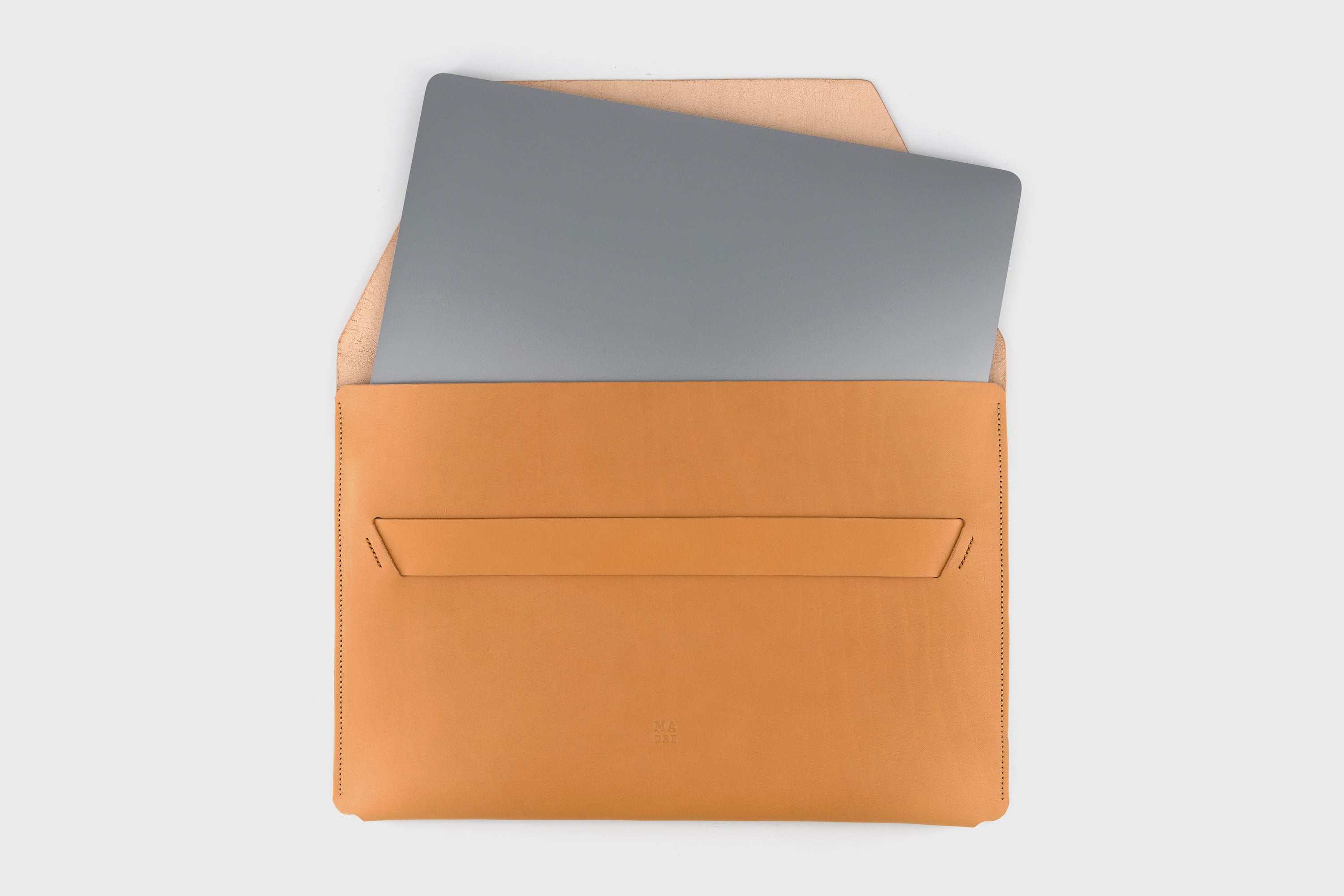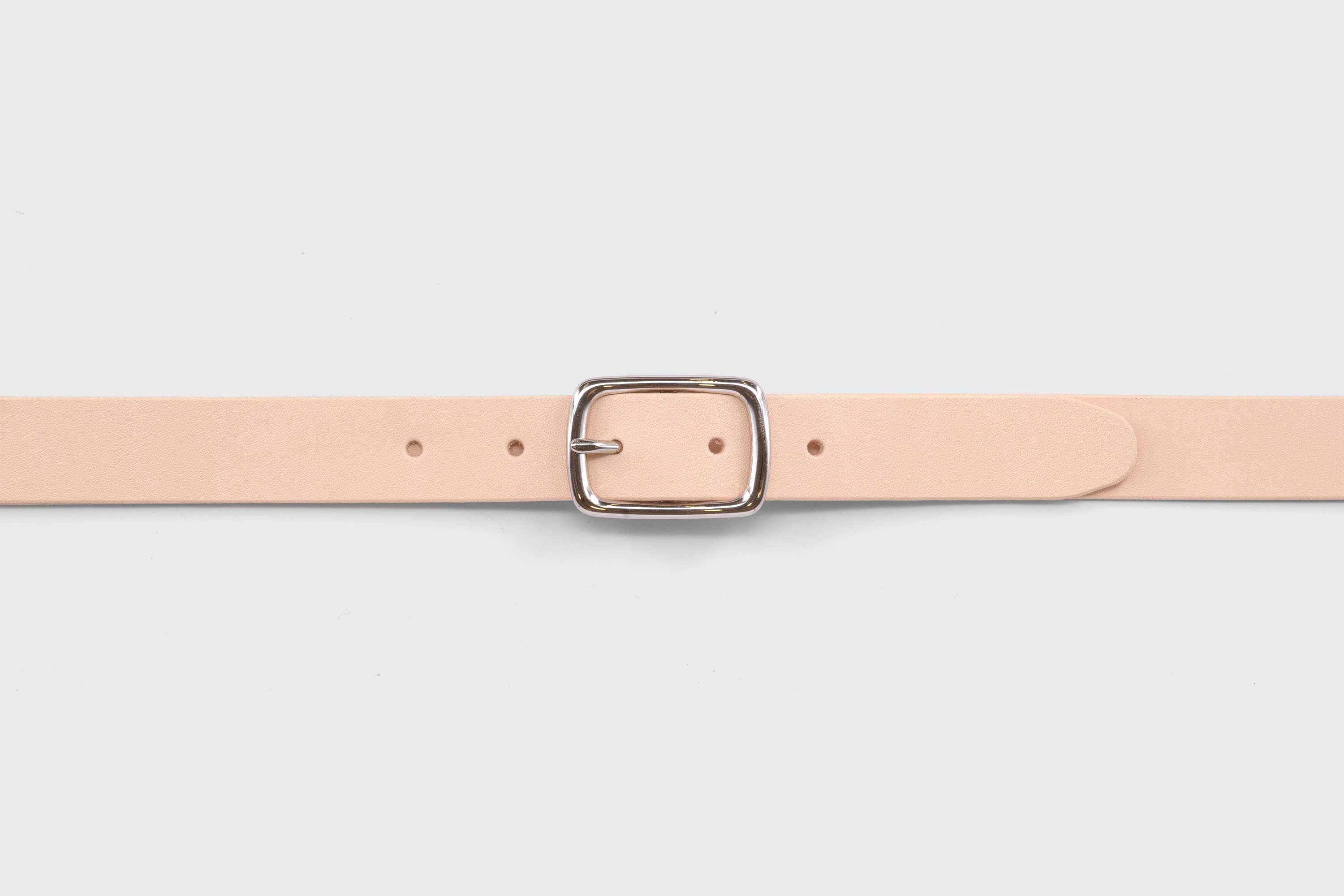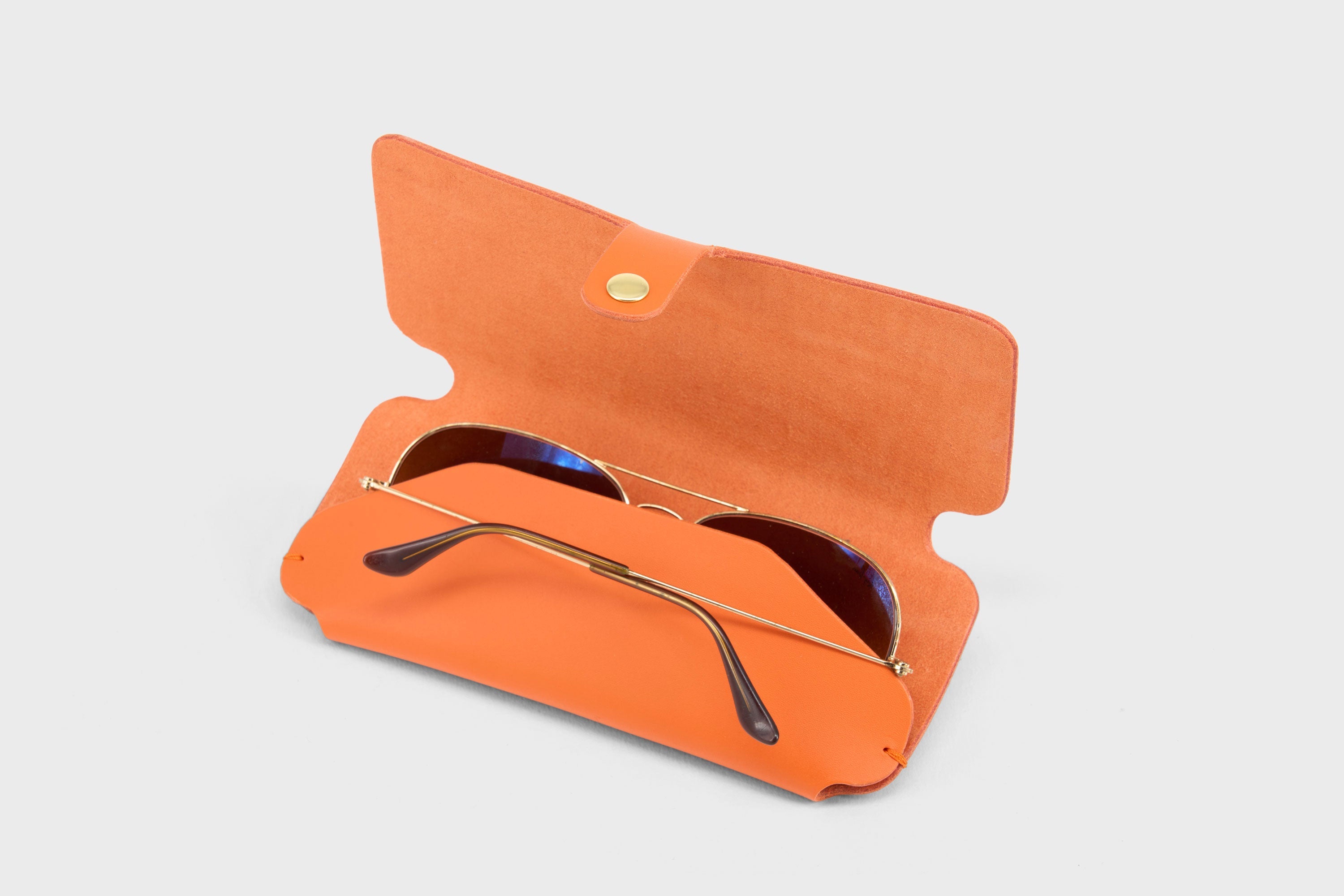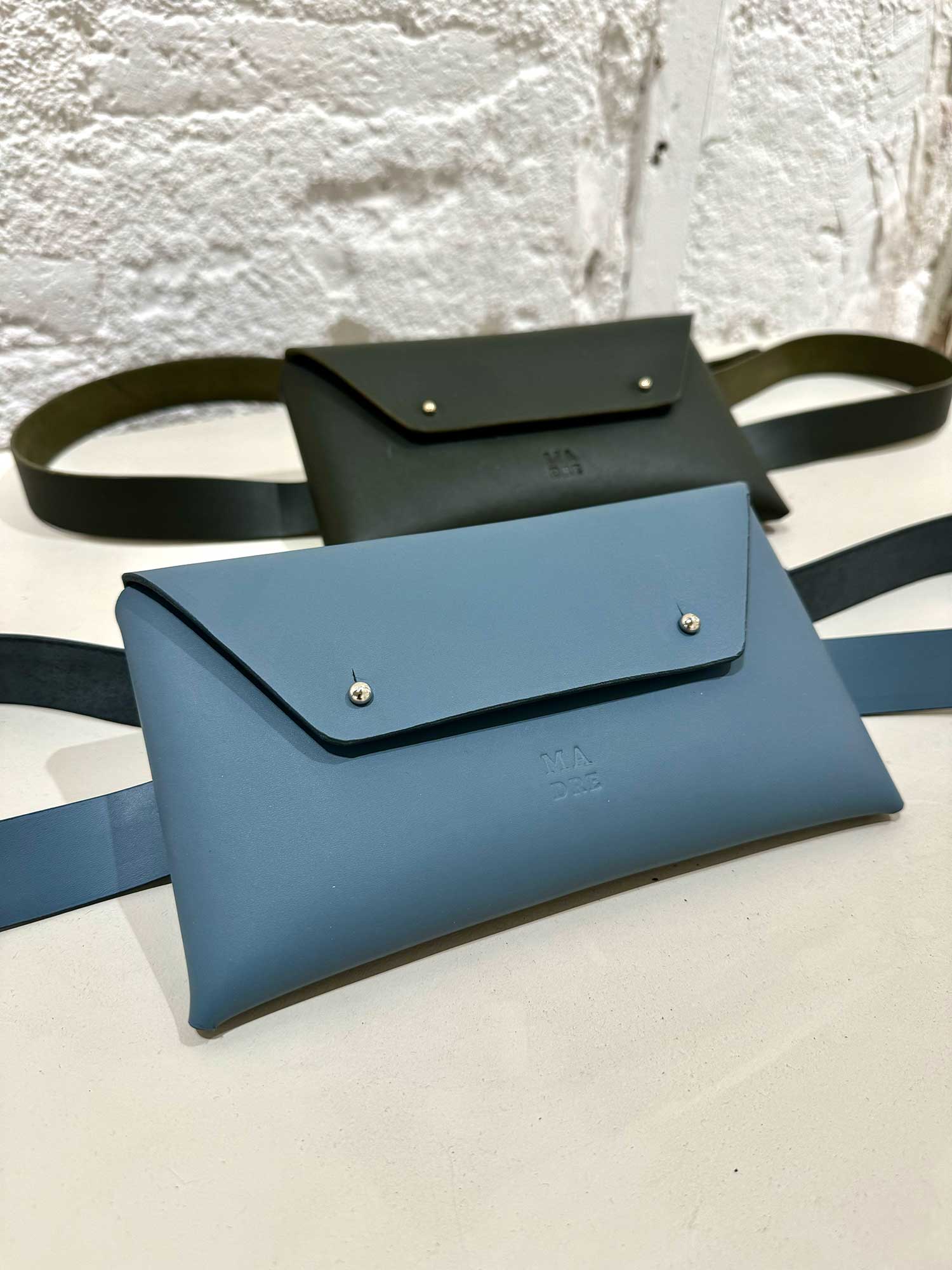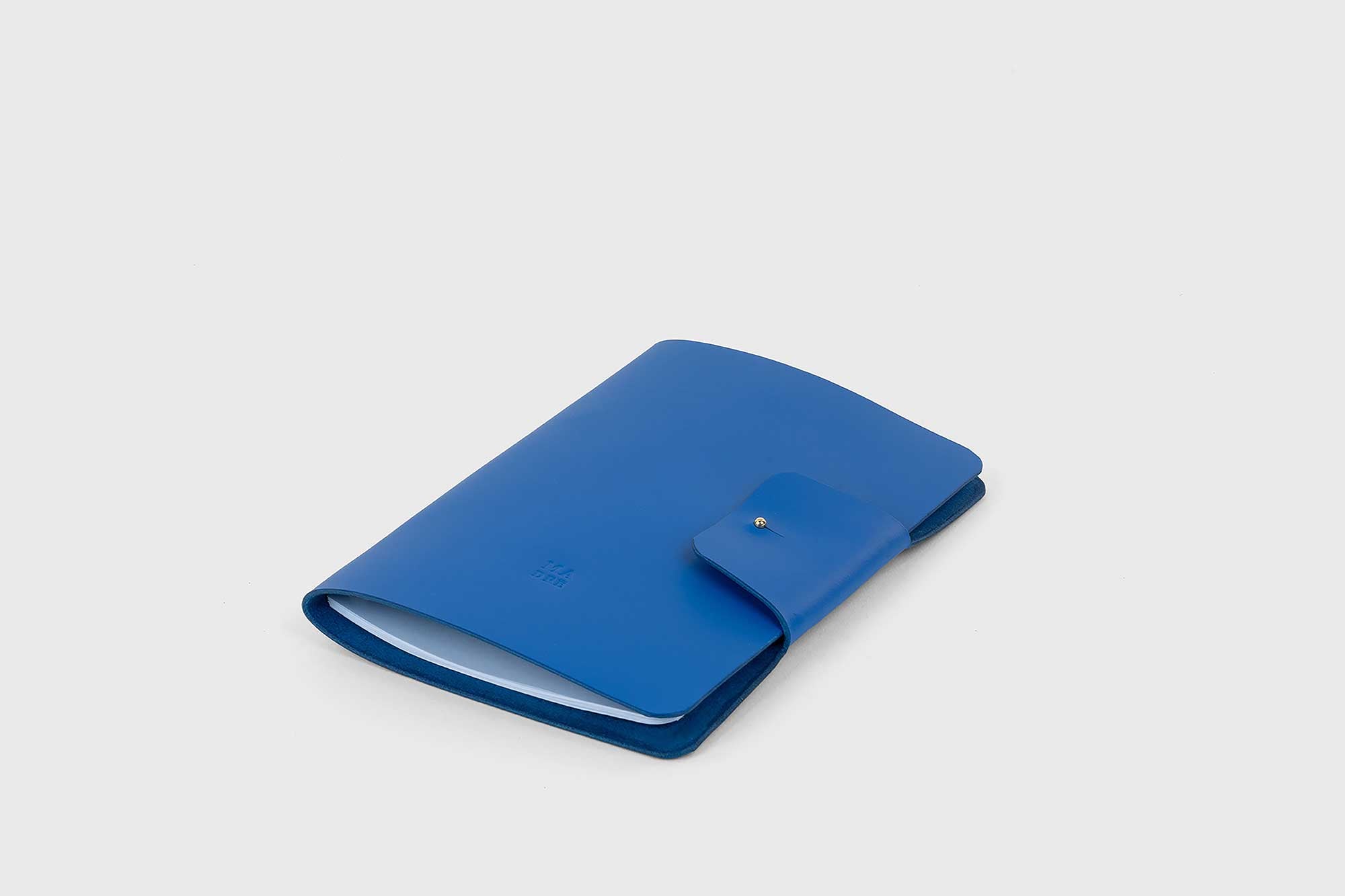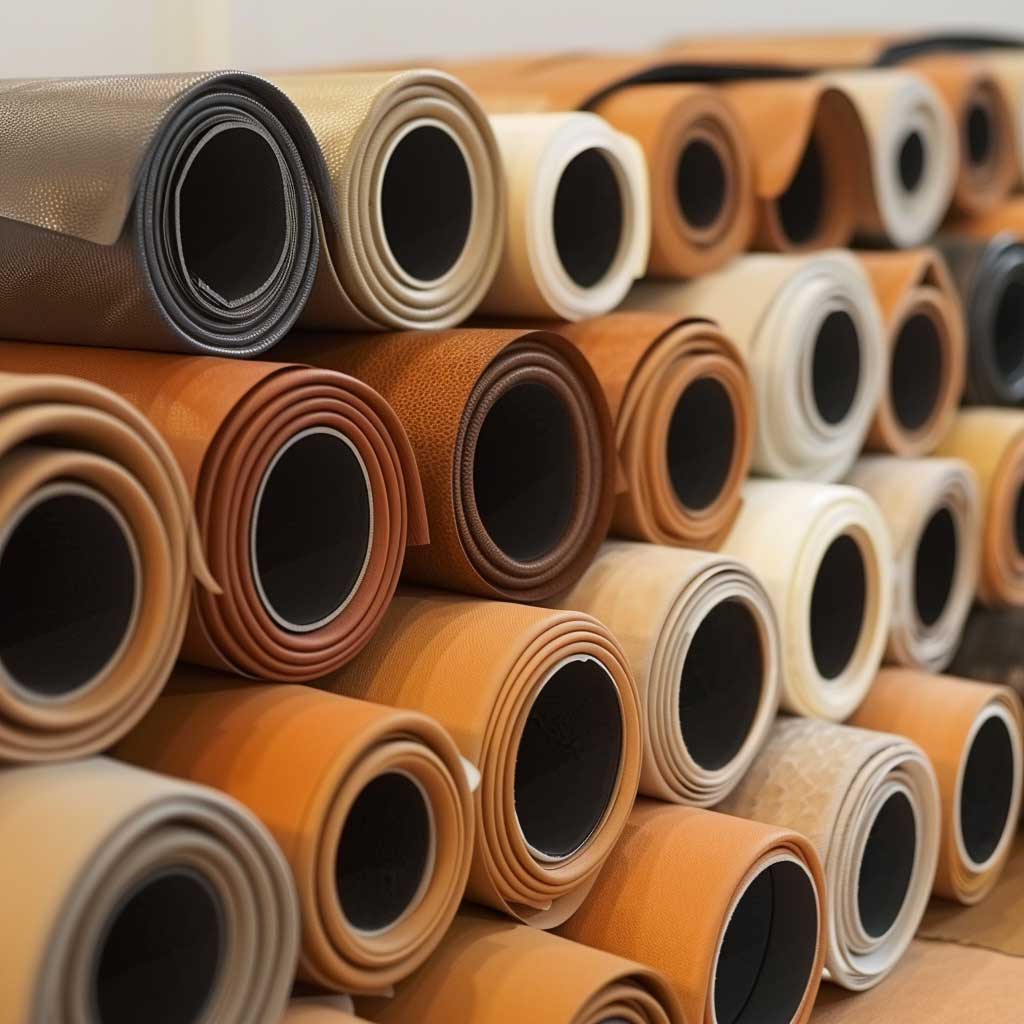
Unpacking Common Myths About Leather: Facts You Need to Know
Leather has been a staple in fashion and craftsmanship for centuries, admired for its durability, versatility, and timeless appeal. Yet, despite its long history, there are plenty of misconceptions surrounding this material—myths that can make it seem intimidating, impractical, or even outdated. At Atelier Madre, we believe that understanding leather’s true qualities can help you appreciate its unique value and beauty.
From questions about sustainability to confusion over maintenance, leather is often misunderstood. In this blog post, we’ll debunk some of the most common myths about leather, separating fact from fiction so you can feel confident investing in this remarkable material. Whether you’re a seasoned leather enthusiast or just starting to explore its possibilities, we’re here to clear the air and celebrate what makes leather so special.
Myth: All Leather is the Same
It’s easy to assume that all leather is the same, but the truth is far more nuanced. Leather comes in a variety of grades, each with distinct qualities, textures, and durability that impact its overall look and longevity. Understanding these differences can help you make better choices when investing in leather goods.

Key Leather Grades
- Full-Grain Leather: The highest quality, using the entire hide. It’s durable, rich in texture, and develops a beautiful patina over time.
- Top-Grain Leather: Slightly refined by sanding out imperfections, it offers a smooth, uniform finish while maintaining durability.
- Genuine Leather: It is not a grade, it doesn’t describe the grain or the quality of a leather, it just means “real”. The misconception that Genuine Leather is a different type of low quality leather, came about because “genuine leather” was stamped on all kinds of leather goods, from low to high quality. The manufacturers were able to sell different types of leather as long as it had the “genuine leather” label.
- Bonded Leather: Made from leather scraps bonded with adhesives, it lacks the strength and beauty of higher grades.
Why Quality Matters
The leather grade significantly impacts how a product feels, wears, and ages. Full-grain leather offers long-lasting beauty, while lower grades like bonded leather may crack or peel over time, requiring frequent replacements.
Craftsmanship Makes the Difference
The craftsmanship behind a leather item enhances its quality, ensuring it’s not just an accessory but an investment. A well-made leather piece can last for years, developing character and becoming a cherished part of your wardrobe.
By understanding leather grades and craftsmanship, you can choose pieces that combine style, durability, and value, ensuring they stand the test of time.
Myth: Leather Is Not Eco-Friendly
Leather often gets a bad reputation when it comes to sustainability, with many assuming it’s harmful to the environment. While some leather production methods can have an impact, the truth is that leather can be an eco-friendly material when sourced and processed responsibly.

Why Leather Can Be Sustainable
- Byproduct of Other Industries
Leather is often made from hides that would otherwise go to waste as byproducts of the meat and dairy industries. Using these materials reduces waste and gives them a second life. - Durability and Longevity
High-quality leather lasts for decades with proper care, meaning fewer replacements and less waste compared to synthetic alternatives that wear out quickly. - Natural Biodegradability
Unlike synthetic materials, leather decomposes naturally over time, making it a better option than plastics, which can linger in landfills for centuries.
Responsible Leather Practices
- Vegetable Tanning
This process uses natural plant-based extracts like tree bark to treat leather, avoiding harmful chemicals and creating rich, natural finishes. - Ethical Sourcing
Sustainable leather comes from suppliers who prioritize reducing waste, conserving resources, and ensuring fair working conditions. - Craftsmanship
Investing in well-made leather items means fewer replacements, reducing waste and supporting sustainable consumption.
Why It Matters
Sustainability isn’t just about materials—it’s about thoughtful choices. When responsibly sourced and cared for, leather is a durable, eco-friendly option that values quality over quantity. By investing in timeless, well-crafted leather pieces, you’re making a choice that reduces waste and aligns with sustainable practices.
Myth: All Leather Is Waterproof
It’s a common belief that leather is completely waterproof, but that’s not entirely true. While leather has some natural water-resistant qualities, its porous fibers mean it can absorb water if exposed for too long. This can lead to issues like staining, stiffness, or cracking as it dries.

Types of Leather and Water Resistance
Not all leather reacts to water the same way:
- Full-Grain Leather: Offers some natural water resistance but still needs protection for prolonged exposure.
- Suede and Nubuck: These soft leathers are highly vulnerable to water and can stain or lose texture easily.
- Treated Leather: Leather treated with waterproofing agents or synthetic coatings is much more resistant to water, making it ideal for outdoor use.
Can Leather Be Made Waterproof?
While leather isn’t naturally waterproof, it can be treated to improve its resistance:
- Waterproofing Sprays: Create a protective barrier against moisture but require regular reapplication.
- Oil-Tanned Leather: Treated with oils or waxes, it has a rugged, water-resistant surface.
- Waterproof Finishes: Synthetic coatings make leather waterproof but can alter its natural feel.
How to Care for Leather
To keep your leather looking great and protected from water:
- Use a high-quality waterproofing spray and reapply regularly.
- If leather gets wet, blot it dry gently and let it air-dry naturally.
- Condition regularly to restore natural oils and prevent cracking.
- Avoid full immersion in water, as it can cause lasting damage.
What Happens When Leather Gets Wet?
Untreated leather exposed to water may:
- Stain or discolor, especially on lighter-colored pieces.
- Lose its shape or warp as it dries.
- Crack over time as natural oils are stripped away.
The Bottom Line
No, not all leather is waterproof—but with the right treatments and care, it can handle life’s occasional splashes while retaining its timeless beauty and durability. By choosing quality leather and protecting it properly, you’re investing in a material that lasts. Explore our collection today to find leather pieces that fit your style and stand the test of time.
Myth: Faux Leather Is Always Better for the Environment

Faux leather, often called vegan leather, is seen by many as the more eco-friendly choice because it avoids animal products. However, the reality is more complicated. While faux leather has its advantages, its environmental impact can often outweigh its perceived benefits.
What Is Faux Leather Made Of?
Faux leather is usually made from synthetic materials like PVC or polyurethane, which are plastics derived from fossil fuels. While these materials mimic leather’s appearance, they come with significant environmental drawbacks:
- High Energy Use: Producing faux leather requires energy-intensive chemical processes.
- Non-Biodegradable: Unlike natural leather, faux leather doesn’t break down over time, leading to long-term waste in landfills.
- Microplastic Pollution: As it wears down, faux leather can release microplastics that harm ecosystems.
Why Genuine Leather Can Be More Sustainable
When responsibly produced, genuine leather offers some environmental advantages:
- Byproduct Use: Most leather is made from hides that are byproducts of the meat and dairy industries, reducing waste.
- Durability: Genuine leather lasts for decades, meaning fewer replacements and less waste compared to the shorter lifespan of faux leather.
- Biodegradability: Natural leather decomposes over time, unlike synthetic materials that persist indefinitely.
Faux Leather vs. Genuine Leather
While faux leather avoids animal products, it’s often made from plastics like PVC or polyurethane, which have significant environmental impacts. These materials are resource-intensive to produce and release microplastics as they break down, making them less sustainable in the long run.
The Ethical and Environmental Balance
Faux leather is a good option for those prioritizing animal welfare, but it comes with environmental trade-offs like its reliance on plastics and shorter lifespan. Genuine leather, when responsibly sourced and cared for, provides a sustainable, long-lasting alternative that reduces waste and aligns with thoughtful craftsmanship.
So, is faux leather always better for the environment? Not necessarily. Both materials have pros and cons, but genuine leather offers durability and sustainability that often outweighs the synthetic alternative.
Myth: Leather Is Only for Cold Weather

Leather is often associated with winter jackets and boots, but this versatile material is far from a cold-weather exclusive. With its natural breathability and adaptability, leather works beautifully in every season when paired thoughtfully.
Why Leather Isn’t Just for Winter
- Lightweight Leathers: Thin, soft leathers like lambskin are perfect for warmer weather, feeling light on the skin without trapping heat.
- Breathable Material: Leather’s natural fibers allow airflow, avoiding the stickiness often caused by synthetic materials.
Leather for All Seasons
- Spring: Lightweight leather bags or jackets add a chic touch to breezy outfits.
- Summer: Accessories like slim leather belt bags, sandals, or straps pair well with breathable fabrics like cotton or linen for a fresh, airy look.
- Fall: Rich leather tones like brown and burgundy complement cozy sweaters and scarves perfectly.
- Winter: Heavier leather jackets and boots shine as durable, stylish protection against the elements.
Styling Leather for Warm Weather
- Choose lightweight pieces like soft jackets or minimalist accessories.
- Opt for lighter colors such as tan or beige to reflect sunlight.
- Pair leather with breathable fabrics like linen or cotton for a comfortable, effortless look.
Leather’s Durability Advantage
Leather’s resilience makes it ideal year-round. It withstands sun exposure, temperature changes, and everyday wear while maintaining its elegance. A quality leather item—be it a bag, sandal, or belt—lasts through every season, making it a reliable and stylish wardrobe staple.
So, is leather only for cold weather? Absolutely not. With the right choices, leather becomes an all-season essential, offering timeless style and functionality no matter the temperature.
Myth: Leather Requires Constant Maintenance

Leather often carries a reputation for being high-maintenance, but the truth is, caring for leather is simpler than you might think. High-quality leather is naturally durable and ages beautifully, requiring only occasional upkeep to maintain its strength and style.
Simple Leather Care Tips
- Clean Regularly
- Wipe away dust and dirt with a soft, dry cloth every few weeks.
- For light stains, a damp cloth is often enough—no need for specialty cleaners.
- Condition Occasionally
- Apply leather conditioner every 3–6 months to keep the material supple and prevent cracking.
- Protect From Moisture
- If leather gets wet, blot it dry and let it air-dry naturally. Avoid heat or sunlight, which can dry it out.
- Store Properly
- Use a dust bag or tissue paper to help bags, belts, or wallets keep their shape when not in use.
Low Maintenance, Long-Lasting
One of the best things about leather is its resilience. With minimal care, it not only lasts for years but also develops a patina that adds character and charm. Unlike synthetic materials, leather ages gracefully, making it a sustainable and stylish choice for your wardrobe.
So, does leather require constant maintenance? Not at all! A little attention goes a long way, ensuring your leather goods remain beautiful and functional for a lifetime. Explore our collection today and experience timeless leather pieces designed to fit effortlessly into your life.
Myth: Leather Is Too Expensive

Leather often seems like a costly choice, but the idea that it’s out of reach doesn’t tell the full story. While high-quality leather products may have a higher upfront cost, they are an investment in durability, timeless style, and long-term value—qualities that make them worth every penny.
Why Leather Is Worth the Price
- Durability
- High-quality leather can last for decades with minimal care, far outliving synthetic alternatives that crack or peel after a few seasons.
- A single well-made leather bag can outlast several cheaper options, saving you money over time.
- Timeless Style
- Leather never goes out of fashion, making it a smart investment in a piece that will remain stylish for years.
- Unlike trend-driven accessories, leather ages gracefully, developing a unique patina that adds character.
- Sustainability
- Durable leather reduces the need for frequent replacements, minimizing waste and making it a more sustainable choice.
Breaking Down the Cost
A high-quality leather item offers better value over time when you consider its longevity:
- A $200 leather bag lasting 10 years costs $20 per year.
- A $50 synthetic bag replaced annually costs $500 over the same period.
Leather for Every Budget
Leather comes in a range of price points, from handcrafted luxury pieces to more affordable, everyday options. Regardless of the cost, the durability and classic appeal of leather ensure great value for your investment.
So, is leather too expensive? Not when you consider its long-term durability, timeless style, and sustainable benefits. Think of leather as an investment—one that rewards you for years to come. Explore our collection today to find a leather accessory that fits your budget and lifestyle.
Myth: Vegetable-Tanned Leather Is the Same as Vegan Leather

The terms “vegetable-tanned leather” and “vegan leather” are often confused, but they are entirely different materials with distinct qualities and environmental impacts.
What is Vegetable-Tanned Leather?
Vegetable-tanned leather is made from animal hides and treated with natural plant-based agents like tree bark or fruits. It’s eco-friendlier than other tanning methods, durable, and develops a beautiful patina over time.
- Key Features:
- Made from animal hides (byproducts of the meat industry).
- Uses biodegradable, plant-based tanning agents.
- Long-lasting and ages gracefully.
What is Vegan Leather?
Vegan leather is a synthetic material made to mimic leather, typically using plastics like PVC or polyurethane. While it avoids animal products, it often relies on non-biodegradable materials and can have a significant environmental footprint.
- Key Features:
- Made from synthetic or plant-based materials.
- Less durable, prone to cracking and peeling.
- Non-biodegradable if plastic-based.
Key Differences
- Material Origin: Vegetable-tanned leather is derived from animal hides, while vegan leather is synthetic.
- Durability: Vegetable-tanned leather lasts decades, whereas vegan leather has a shorter lifespan.
- Environmental Impact: Vegetable tanning uses natural, biodegradable materials, while vegan leather often depends on petroleum-based plastics.
Why It Matters
Understanding these differences helps you choose a material that aligns with your values. Vegetable-tanned leather is celebrated for its durability and timeless appeal, while vegan leather offers an animal-free alternative with trade-offs in longevity and sustainability.
So, are they the same? Not at all. Each has its merits, but they serve very different purposes. Explore our collection to experience the beauty and craftsmanship of vegetable-tanned leather.
Myth: The Leather Industry is Always Harmful to Animals

Many people believe the leather industry exploits animals, but the truth is more nuanced. Most leather is made from hides that are byproducts of the meat and dairy industries—materials that would otherwise go to waste. By repurposing these hides, the leather industry reduces waste and ensures the animal is fully utilized.
Key Points
- Leather does not require animals to be raised or slaughtered solely for their hides.
- Repurposing hides minimizes environmental waste and supports sustainability.
Ethical Sourcing Matters
Responsible brands prioritize working with suppliers who follow humane practices and sustainable processes. At Atelier Madre, we carefully source ethically produced leather to create high-quality, long-lasting products that align with our values.
A Sustainable Alternative
Without the leather industry, billions of hides would end up in landfills, contributing to pollution. Transforming these hides into durable materials supports sustainability and reduces environmental impact.
Why It Matters
Understanding the leather production process helps you make informed choices. Supporting brands that prioritize ethical sourcing and sustainability ensures you’re respecting both animals and the planet.
Not all leather is the same. While most cow leather is a byproduct of the meat industry, exotic leather—sourced from animals like snakes, crocodiles, and ostriches—often involves animals bred or hunted specifically for their skins. This raises ethical and environmental concerns.
Exotic Leather: Ethical and Environmental Concerns
Exotic leather often requires animals to be hunted or bred specifically for their skins, leading to:
- Animal Welfare Issues: Inhumane farming practices or illegal poaching.
- Threats to Wildlife: Endangered species and disrupted ecosystems.
- Environmental Harm: Unsustainable farming and lack of transparency.
Myth: Leather Always Smells Good

Many people associate leather with a rich, pleasant aroma, but not all leather smells the same. The scent largely depends on the tanning process used to treat the hide.
Where Does Leather’s Smell Come From?
- Vegetable-Tanned Leather: Tanned with natural plant-based extracts like tree bark, it has an earthy, appealing scent.
- Chrome-Tanned Leather: Treated with chemicals like chromium salts, it often has a sharper, more chemical-like odor, especially in lower-quality leather.
- Synthetic Treatments: Faux or heavily treated leather can smell artificial or plastic-like due to synthetic materials.
Why Some Leathers Smell Better
- High-Quality Leather: Premium, vegetable-tanned leather often has a natural and pleasant aroma.
- Low-Quality Leather: Overly treated leather or synthetic alternatives may have harsh or artificial smells, signaling lower craftsmanship.
Does All Leather Smell Good?
Not necessarily. Leather’s smell depends on its quality and treatment. Additionally, leather can absorb environmental odors, altering its scent over time.
Tips for Preserving Leather’s Aroma
- Opt for vegetable-tanned leather for a natural scent.
- Store properly in a cool, dry place away from strong odors.
- Avoid over-treating with sprays or conditioners that mask the leather’s natural fragrance.
At Atelier Madre, we craft pieces from high-quality, vegetable-tanned leather that showcases authentic beauty, durability, and a subtle, natural scent—free from harsh chemical odors.
So, does leather naturally smell good? It depends on how it’s made. Choose thoughtfully crafted leather for a product that’s authentic in every way. Explore our collection today.
Myth: Leather is Always Stiff and Hard to Break In

Many people assume leather is tough and rigid, taking ages to soften. This misconception can make leather seem intimidating, especially for first-time buyers. In reality, not all leather is stiff, and its flexibility depends on the type of leather and craftsmanship.
The Truth About Leather Flexibility
Leather’s feel varies based on its treatment:
- Soft Leathers: Lambskin or vegetable-tanned leather is naturally supple and requires little to no breaking in.
- Firm Leathers: Full-grain or thicker cowhide may feel firmer initially but softens and adapts over time, becoming more comfortable.
Why Leather Breaks In
Leather is made from natural fibers that stretch and adjust with use. The breaking-in process allows the material to conform to your body, enhancing comfort and personalization.
Choosing Comfortable Leather
For easy-to-wear leather:
- Type: Look for soft leathers like lambskin or top-grain leather.
- Craftsmanship: High-quality products ensure smoother, more flexible finishes.
- Conditioning: Well-conditioned leather is softer and more pliable.
Tips to Speed Up Breaking In
- Use It Regularly: Movement naturally softens leather fibers.
- Apply Conditioner: Maintains flexibility and prevents stiffness.
- Handle Gently: Massage or bend the leather lightly to ease firmness.
Why Quality Matters
Stiffness is often associated with lower-quality leather. Premium leathers are designed for durability and comfort, improving with time as they develop a soft, personalized feel.
So, is leather always stiff and hard to break in? Absolutely not. With the right type of leather and proper care, it’s a material that adapts beautifully to your lifestyle. Explore our collection today and experience leather that’s as comfortable as it is stylish.
Myth: Leather Scratches Easily

Leather is known for its luxury and durability, but many worry it’s prone to scratches. While leather can show marks over time, scratches are often minor, fixable, and even add to its character. Let’s break down this myth.
Why Do Scratches Happen?
Scratches usually result from contact with sharp objects or rough surfaces. Their visibility depends on the leather type:
- Full-Grain Leather: Highly durable and resistant, minor scratches often blend into its texture and enhance its patina.
- Top-Grain Leather: Slightly processed, it’s less resistant than full-grain but still durable.
- Suede and Nubuck: Softer leathers that show scratches more easily and need extra care.
Are Scratches Permanent?
Not always! Many can be minimized or removed with simple care:
- Buffing: Use a soft cloth to gently buff out light scratches.
- Leather Conditioner: Restores moisture and helps the leather recover.
- Professional Care: Deep scratches can often be repaired by experts.
The Beauty of Patina
Leather ages gracefully, and minor marks contribute to a natural patina—a soft sheen and texture that tells the story of its use. Scratches can add charm, making your piece uniquely yours.
Tips to Prevent Scratches
- Avoid Sharp Objects: Store keys or pens in separate compartments.
- Condition Regularly: Keeps leather supple and less prone to scratches.
- Store Properly: Use a dust bag or cover to protect it when not in use.
So, does leather scratch easily? Not when it’s high-quality and properly cared for. Scratches are part of leather’s story, adding beauty and individuality. Explore our collection today and find leather built to last—and tell your story.
Myth: Leather Can’t Be Recycled or Upcycled

Leather is often seen as destined for the landfill once it’s no longer in use, but this is far from the truth. Leather is a highly versatile material that can be recycled, upcycled, and transformed into new products, extending its life and reducing waste.
How Leather Can Be Recycled
Leather, unlike synthetic materials, can be repurposed in practical and creative ways:
- Small Accessories: Old leather can be reshaped into wallets, keychains, or watch straps.
- Patchwork: Scraps are combined to create patchwork bags, upholstery, or unique decorative items.
- Composite Materials: Leather waste is ground and bonded into new materials for functional uses.
The Power of Upcycling
Upcycling transforms old leather into items of greater value or purpose:
- Repurposed Fashion: Worn leather jackets become handbags or belts.
- Home Décor: Scraps are reused for coasters, cushions, or lampshades.
- Artistic Creations: Artisans turn reclaimed leather into one-of-a-kind designs.
Why Recycling and Upcycling Leather Matters
Repurposing leather reduces waste, conserves resources, and minimizes environmental impact, making it a sustainable and thoughtful choice.
How You Can Contribute
- Choose Quality: Invest in durable leather that’s easier to repair or repurpose.
- Repurpose at Home: Get creative with DIY projects using old leather items.
- Support Sustainable Brands: At Atelier Madre, we focus on craftsmanship and longevity, ensuring our leather goods can be enjoyed, repaired, and repurposed for years to come.
So, can leather be recycled or upcycled? Absolutely. Its durability and versatility make it an ideal material for reuse, ensuring it remains a sustainable and timeless choice. Explore our collection today to find leather pieces designed to last—and to live on.
Conclusion
Leather is more than just a material—it’s a story of craftsmanship, durability, and timeless style. While myths about leather can make it seem complicated or impractical, the truth is that leather’s versatility, sustainability, and ease of care make it one of the most remarkable materials you can choose.
At Atelier Madre, we are passionate about showcasing leather in its best light. Our carefully curated collection features ethically sourced, high-quality leather crafted with care and attention to detail. From vegetable-tanned techniques that honor the planet to designs that suit every season, our pieces are created to stand the test of time.
When you invest in a leather accessory from us, you’re choosing more than just a product—you’re embracing a legacy of durability, sustainability, and style. Explore our collection and discover the leather piece that will become a cherished part of your wardrobe for years to come.


